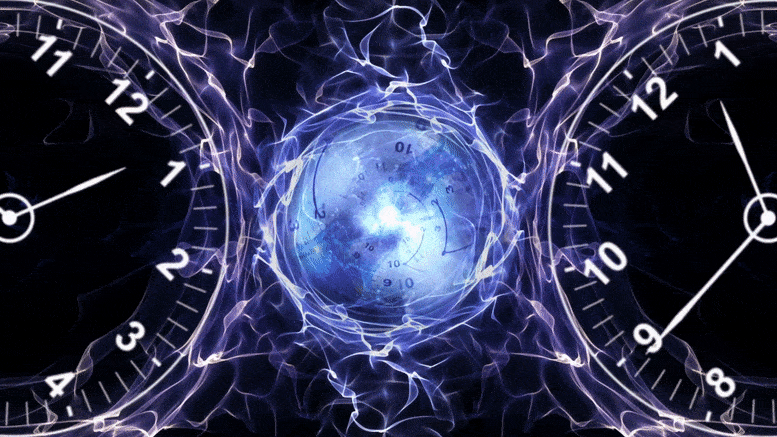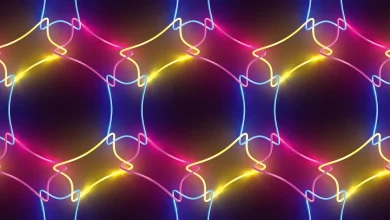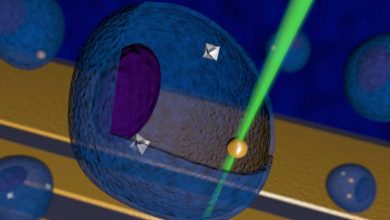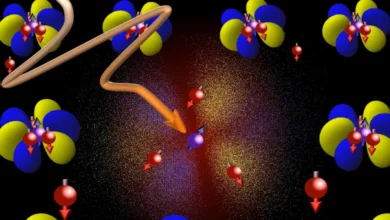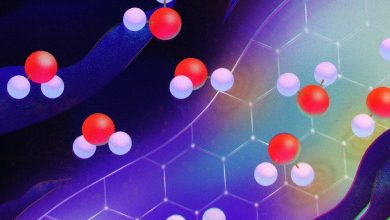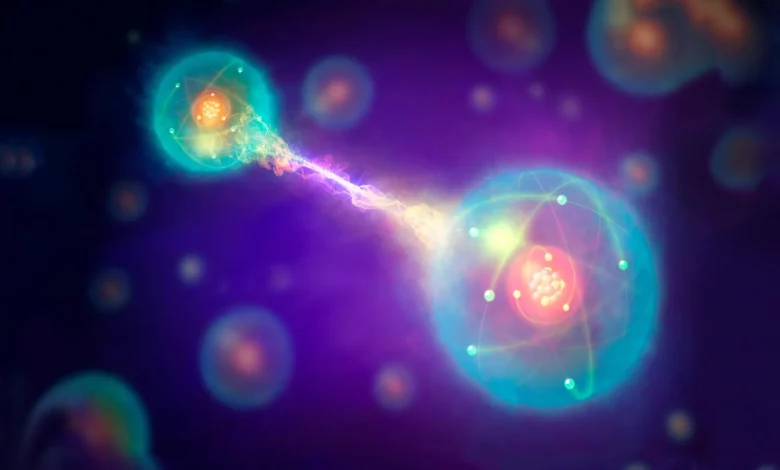
Scientists, including Albert Einstein and Erwin Schrödinger, first discovered the phenomenon of entanglement in the 1930s. In 1972, John Clauser and Stuart Freedman were the first to prove experimentally that two widely separated particles can be entangled.
A Q&A with Caltech alumnus John Clauser on his first experimental proof of quantum entanglement.
When scientists, including Albert Einstein and Erwin Schrödinger, first discovered the phenomenon of entanglement in the 1930s, they were perplexed. Disturbingly, entanglement required two separated particles to remain connected without being in direct contact. In fact, Einstein famously called entanglement “spooky action at a distance,” because the particles seemed to be communicating faster than the speed of light.
Born on December 1, 1942, John Francis Clauser is an American theoretical and experimental physicist known for contributions to the foundations of quantum mechanics, in particular the Clauser–Horne–Shimony–Holt inequality. Clauser was awarded the 2022 Nobel Prize in Physics, jointly with Alain Aspect and Anton Zeilinger “for experiments with entangled photons, establishing the violation of Bell inequalities and pioneering quantum information science.”
To explain the bizarre implications of entanglement, Einstein, along with Boris Podolsky and Nathan Rosen (EPR), argued that “hidden variables” should be added to quantum mechanics. These could be used to explain entanglement, and to restore “locality” and “causality” to the behavior of the particles. Locality states that objects are only influenced by their immediate surroundings. Causality states that an effect cannot occur before its cause, and that causal signaling cannot propagate faster than light speed. Niels Bohr famously disputed EPR’s argument, while Schrödinger and Wendell Furry, in response to EPR, independently hypothesized that entanglement vanishes with wide-particle separation.
Unfortunately, at the time, no experimental evidence for or against quantum entanglement of widely separated particles was available. Experiments have since proven that entanglement is very real and fundamental to nature. Furthermore, quantum mechanics has now been proven to work, not only at very short distances but also at very great distances. Indeed, China’s quantum-encrypted communications satellite, Micius, (part of the Quantum Experiments at Space Scale (QUESS) research project) relies on quantum entanglement between photons that are separated by thousands of kilometers.
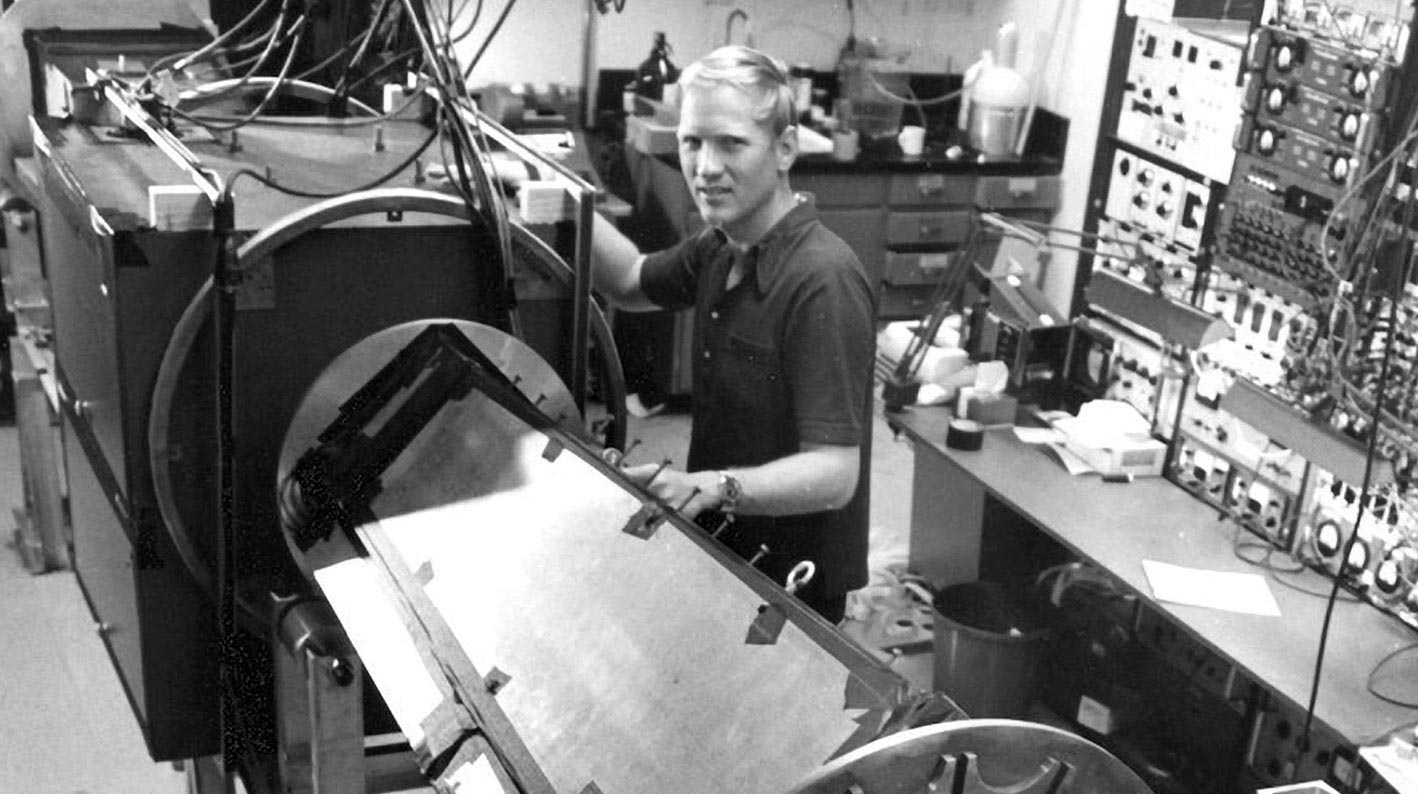
The very first of these experiments was proposed and executed by Caltech alumnus John Clauser (BS ’64) in 1969 and 1972, respectively. His findings are based on Bell’s theorem, devised by CERN theorist John Bell. In 1964, Bell ironically proved that EPR’s argument actually led to the opposite conclusion from what EPR had originally intended to show. Bell demonstrated that quantum entanglement is, in fact, incompatible with EPR’s notion of locality and causality.
In 1969, while still a graduate student at Columbia University, Clauser, along with Michael Horne, Abner Shimony, and Richard Holt, transformed Bell’s 1964 mathematical theorem into a very specific experimental prediction via what is now called the Clauser–Horne–Shimony–Holt (CHSH) inequality (Their paper has been cited more than 8,500 times on Google Scholar.) In 1972, when he was a postdoctoral researcher at the University of California Berkeley and Lawrence Berkeley National Laboratory, Clauser and graduate student Stuart Freedman were the first to prove experimentally that two widely separated particles (about 10 feet apart) can be entangled.
Clauser went on to perform three more experiments testing the foundations of quantum mechanics and entanglement, with each new experiment confirming and extending his results. The Freedman–Clauser experiment was the first test of the CHSH inequality. It has now been tested experimentally hundreds of times at laboratories around the world to confirm that quantum entanglement is real.
Clauser’s work earned him the 2010 Wolf Prize in physics. He shared it with Alain Aspect of the Institut d’ Optique and Ecole Polytechnique and Anton Zeilinger of the University of Vienna and the Austrian Academy of Sciences “for an increasingly sophisticated series of tests of Bell’s inequalities, or extensions thereof, using entangled quantum states,” according to the award citation.
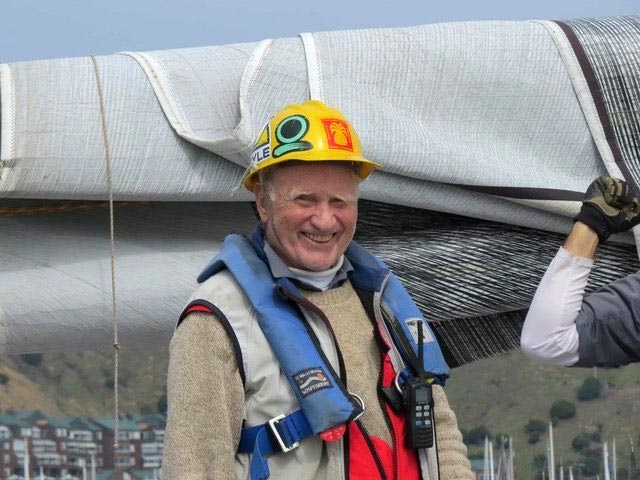
Here, John Clauser answers questions about his historical experiments.
We hear that your idea of testing the principles of entanglement was unappealing to other physicists. Can you tell us more about that?
In the 1960s and 70s, experimental testing of quantum mechanics was unpopular at Caltech, Columbia, UC Berkeley, and elsewhere. My faculty at Columbia told me that testing quantum physics was going to destroy my career. While I was performing the 1972 Freedman–Clauser experiment at UC Berkeley, Caltech’s Richard Feynman was highly offended by my impertinent effort and told me that it was tantamount to professing a disbelief in quantum physics. He arrogantly insisted that quantum mechanics is obviously correct and needs no further testing! My reception at UC Berkeley was lukewarm at best and was only possible through the kindness and tolerance of Professors Charlie Townes [PhD ’39, Nobel Laureate ’64] and Howard Shugart [BS ’53], who allowed me to continue my experiments there.
In my correspondence with John Bell, he expressed exactly the opposite sentiment and strongly encouraged me to do an experiment. John Bell’s 1964 seminal work on Bell’s theorem was originally published in the terminal issue of an obscure journal, Physics, and in an underground physics newspaper, Epistemological Letters. It was not until after the 1969 CHSH paper and the 1972 Freedman–Clauser results were published in the Physical Review Letters that John Bell finally openly discussed his work. He was aware of the taboo on questioning quantum mechanics’ foundations and had never discussed it with his CERN co-workers.
What made you want to carry through with the experiments anyway?
Part of the reason that I wanted to test the ideas was because I was still trying to understand them. I found the predictions for entanglement to be sufficiently bizarre that I could not accept them without seeing experimental proof. I also recognized the fundamental importance of the experiments and simply ignored the career advice of my faculty. Moreover, I was having a lot of fun doing some very challenging experimental physics with apparatuses that I built mostly using leftover physics department scrap. Before Stu Freedman and I did the first experiment, I also personally thought that Einstein’s hidden-variable physics might actually be right, and if it is, then I wanted to discover it. I found Einstein’s ideas to be very clear. I found Bohr’s rather muddy and difficult to understand.
What did you expect to find when you did the experiments?
In truth, I really didn’t know what to expect except that I would finally determine who was right—Bohr or Einstein. I admittedly was betting in favor of Einstein but did not actually know who was going to win. It’s like going to the racetrack. You might hope that a certain horse will win, but you don’t really know until the results are in. In this case, it turned out that Einstein was wrong. In the tradition of Caltech’s Richard Feynman and Kip Thorne [BS ’62], who would place scientific bets, I had a bet with quantum physicist Yakir Aharonov on the outcome of the Freedman–Clauser experiment. Curiously, he put up only one dollar to my two. I lost the bet and enclosed a two-dollar bill and congratulations when I mailed him a preprint with our results.
I was very sad to see that my own experiment had proven Einstein wrong. But the experiment gave a 6.3-sigma result against him [a five-sigma result or higher is considered the gold standard for significance in physics]. But then Dick Holt and Frank Pipkin’s competing experiment at Harvard (never published) got the opposite result. I wondered if perhaps I had overlooked some important detail. I went on alone at UC Berkeley to perform three more experimental tests of quantum mechanics. All yielded the same conclusions. Bohr was right, and Einstein was wrong. The Harvard result did not repeat and was faulty. When I reconnected with my Columbia faculty, they all said, “We told you so! Now stop wasting money and go do some real physics.” At that point in my career, the only value in my work was that it demonstrated that I was a reasonably talented experimental physicist. That fact alone got me a job at Lawrence Livermore National Lab doing controlled-fusion plasma physics research.
Can you help us understand exactly whayour experiments showed?
In order to clarify what the experiments showed, Mike Horne and I formulated what is now known as Clauser–Horne Local Realism [1974]. Additional contributions to it were subsequently offered by John Bell and Abner Shimony, so perhaps it is more properly called Bell–Clauser–Horne–Shimony Local Realism. Local Realism was very short-lived as a viable theory. Indeed, it was experimentally refuted even before it was fully formulated. Nonetheless, Local Realism is heuristically important because it shows in detail what quantum mechanics is not.
Local Realism assumes that nature consists of stuff, of objectively real objects, i. e., stuff you can put inside a box. (A box here is an imaginary closed surface defining separated inside and outside volumes.) It further assumes that objects exist whether or not we observe them. Similarly, definite experimental results are assumed to obtain, whether or not we look at them. We may not know what the stuff is, but we assume that it exists and that it is distributed throughout space. Stuff may evolve either deterministically or stochastically. Local Realism assumes that the stuff within a box has intrinsic properties, and that when someone performs an experiment within the box, the probability of any result that obtains is somehow influenced by the properties of the stuff within that box. If one performs say a different experiment with different experimental parameters, then presumably a different result obtains. Now suppose one has two widely separated boxes, each containing stuff. Local Realism further assumes that the experimental parameter choice made in one box cannot affect the experimental outcome in the distant box. Local Realism thereby prohibits spooky action-at-a-distance. It enforces Einstein’s causality that prohibits any such nonlocal cause and effect. Surprisingly, those simple and very reasonable assumptions are sufficient on their own to allow derivation of a second important experimental prediction limiting the correlation between experimental results obtained in the separated boxes. That prediction is the 1974 Clauser–Horne (CH) inequality.
The 1969 CHSH inequality’s derivation had required several minor supplementary assumptions, sometimes called “loopholes.” The CH inequality’s derivation eliminates those supplementary assumptions and is thus more general. Quantum entangled systems exist that disagree with the CH prediction, whereby Local Realism is amenable to experimental disproof. The CHSH and CH inequalities are both violated, not only by the first 1972 Freedman–Clauser experiment and my second 1976 experiment but now by literally hundreds of confirming independent experiments. Various labs have now entangled and violated the CHSH inequality with photon pairs, beryllium ion pairs, ytterbium ion pairs, rubidium atom pairs, whole rubidium-atom cloud pairs, nitrogen vacancies in diamonds, and Josephson phase qubits.
Testing Local Realism and the CH inequality was considered by many researchers to be important to eliminate the CHSH loopholes. Considerable effort was thus marshaled, as quantum optics technology improved and permitted. Testing the CH inequality had become a holy grail challenge for experimentalists. Violation of the CH inequality was finally achieved first in 2013 and again in 2015 at two competing laboratories: Anton Zeilinger’s group at the University of Vienna, and Paul Kwiat’s group at the University of Illinois at Urbana–Champaign. The 2015 experiments involved 56 researchers! Local Realism is now soundly refuted! The agreement between the experiments and quantum mechanics now firmly proves that nonlocal quantum entanglement is real.
What are some of the important technological applications of your work?
One application of my work is to the simplest possible object defined by Local Realism—a single bit of information. Local Realism shows that a single quantum mechanical bit of information, a “qubit,” cannot always be localized in a space-time box. This fact provides the fundamental basis of quantum information theory and quantum cryptography. Caltech’s quantum science and technology program, the 2019 $1.28-billion U.S. National Quantum Initiative, and the 2019 $400 million Israeli National Quantum Initiative all rely on the reality of entanglement. The Chinese Micius quantum-encrypted communications satellite system’s configuration is almost identical to that of the Freedman–Clauser experiment. It uses the CHSH inequality to verify entanglement’s persistence through outer space.
Can you tell us more about your family’s strong connection with Caltech?
My dad, Francis H. Clauser [BS ’34, MS ’35, PhD ’37, Distinguished Alumni Award ’66] and his brother Milton U. Clauser [BS ’34, MS ’35, PhD ’37] were PhD students at Caltech under Theodore von Kármán. Francis Clauser was Clark Blanchard Millikan Professor of Engineering at Caltech (Distinguished Faculty Award ’80) and chair of Caltech’s Division of Engineering and Applied Science. Milton U. Clauser’s son, Milton J. Clauser [PhD ’66], and grandson, Karl Clauser [BS ’86] both went to Caltech. My mom, Catharine McMillan Clauser was Caltech’s humanities librarian, where she met my dad. Her brother, Edwin McMillan [BS ’28, MS ’29], is a Caltech alum and ’51 Nobel Laureate. The family now maintains Caltech’s “Milton and Francis Doctoral Prize” awarded at Caltech commencements.

